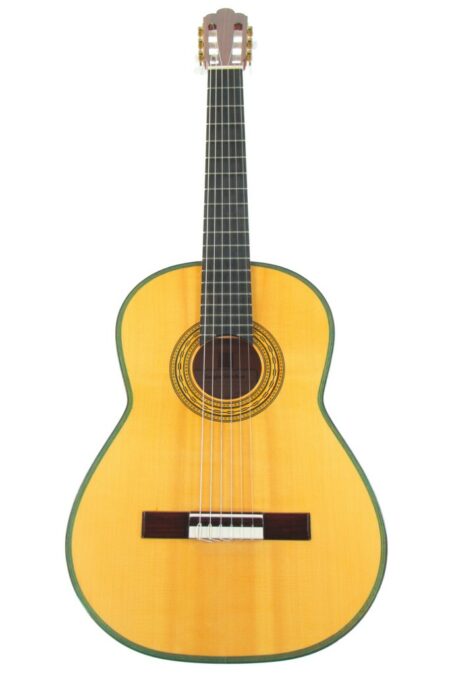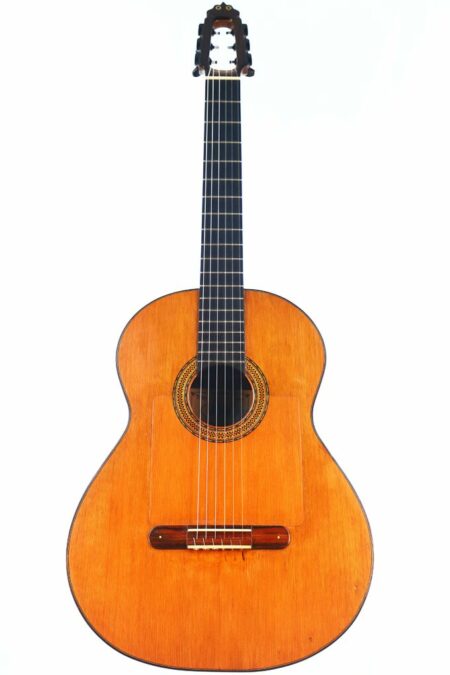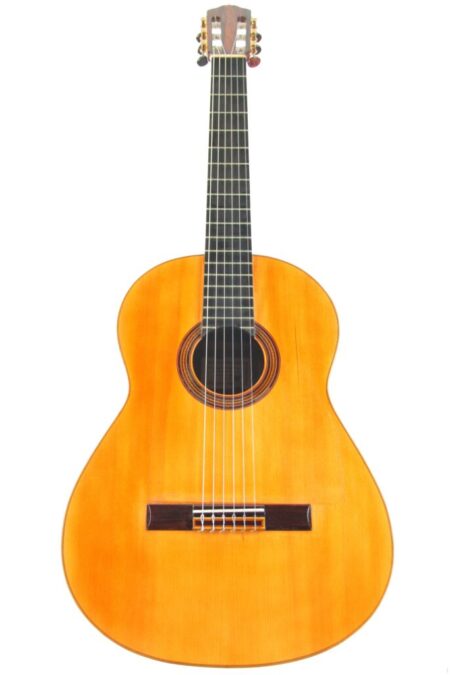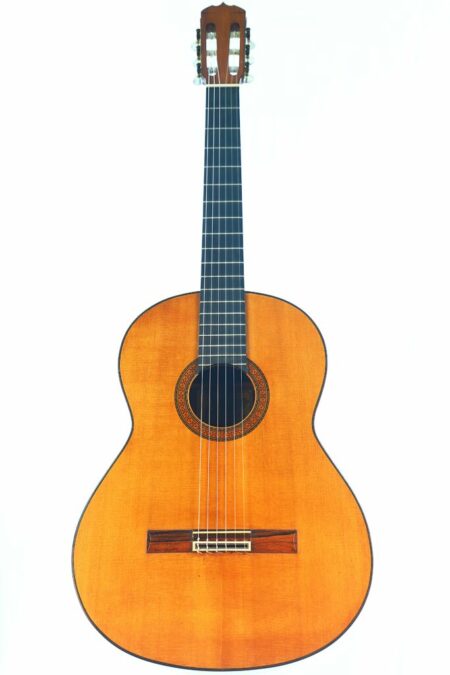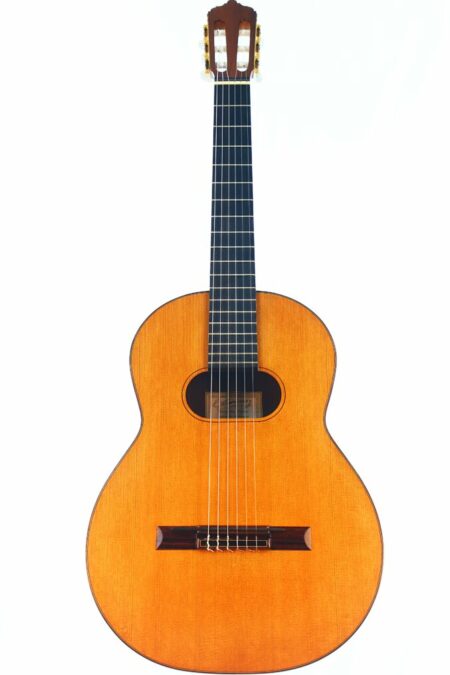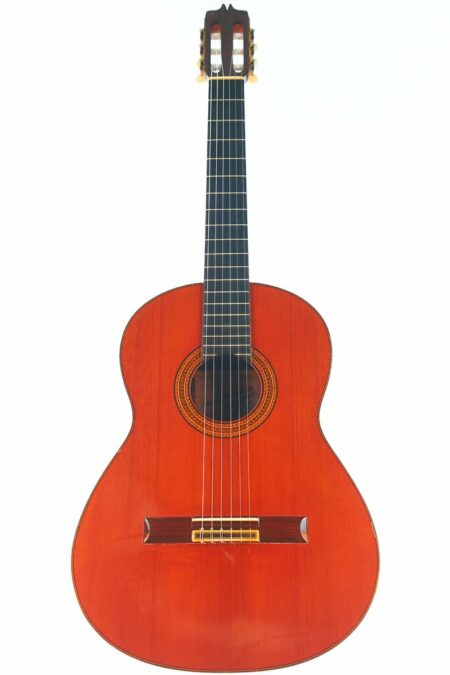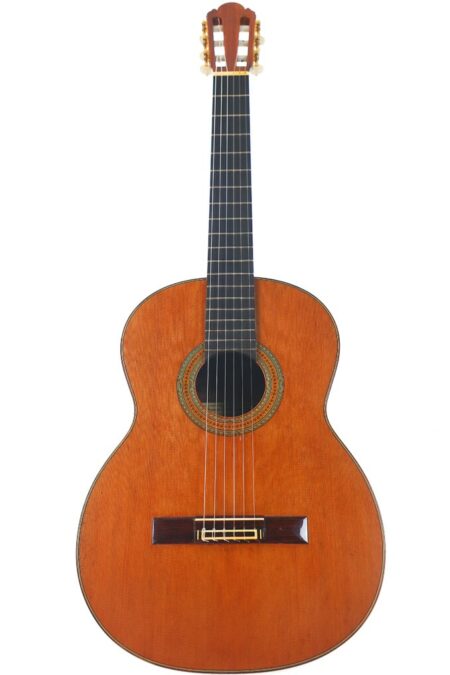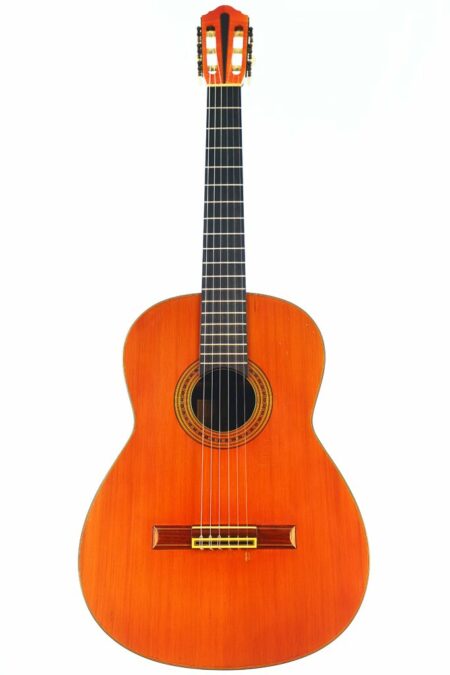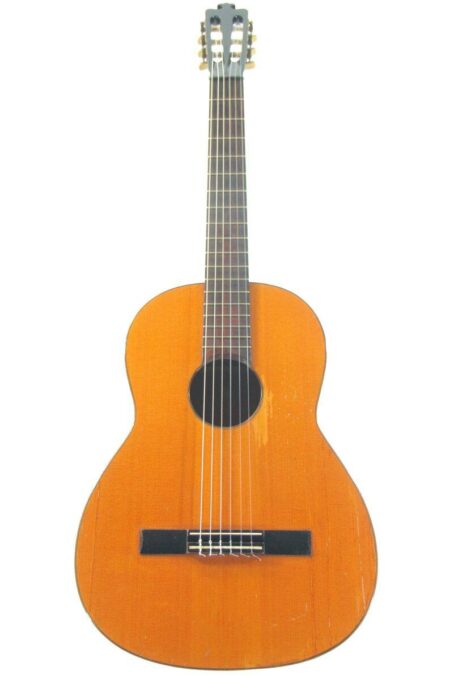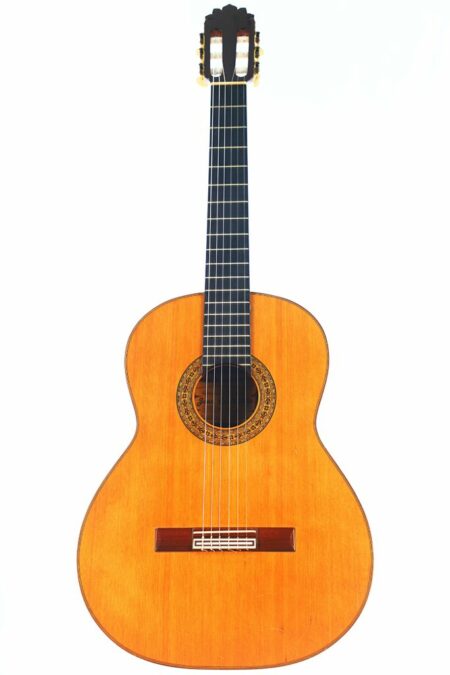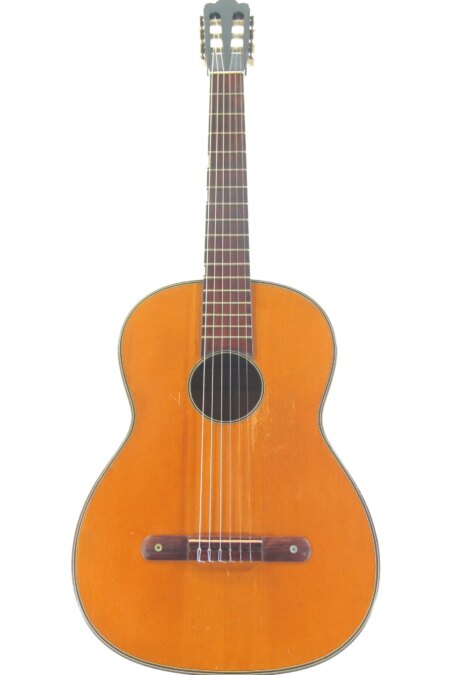Classical Guitars
Experience Tradition, Sound & Craftsmanship
Discover our selection of high-quality classical guitars, also known as nylon string guitars. With their warm sound and typical nylon strings, they are ideal for beginners, advanced players, and lovers of classical music. Whether crafted from fine tonewoods or built by an experienced luthier, each instrument tells its own story.
Explore our handpicked models now and experience the diversity of classical guitars!
-
Gabriela Casas ~1980 Classical Guitar
plus Shipping
-
Anselmo Solar Gonzalez 1977 Classical Guitar
plus Shipping
-
Antonio de Torres SE 112 by Sergio Sanchez
plus Shipping
-
Gennaro Fabricatore 1790 Classical Guitar
plus Shipping
-
Manuel Contreras 1982 Classical Guitar
plus Shipping
-
Miguel Garcia Cabezas 2000 Classical Guitar
plus Shipping
-
Viuda Y Sobrinos de Domingo Esteso 1940’s Flamenco Guitar
plus Shipping
-
José Ramirez 1a 1960 Classical Guitar
plus Shipping
-
Enrico Piretti 1973 Classical Guitar
plus Shipping
-
Estrada Gomez 2004 classical guitar
plus Shipping
-
Evelio Dominguez 1974 Classical Guitar
plus Shipping
-
Andreas Wahl 2004 Classical Guitar
plus Shipping
-
Eugenio Riba 2020 Classical Guitar
plus Shipping
-
Ignacio Fleta 1970 Classical Guitar
plus Shipping
-
Enrico Piretti 1974 Classical Guitar
plus Shipping
-
Richard Jacob Weissgerber 1933 “Torres”
plus Shipping
-
José Ramírez 1a “Da Cámara” 1984 Classical Guitar
plus Shipping
-
José Ramírez 1a 1987
plus Shipping
-
Joan Cashimira Model 144
plus Shipping
-
Richard Jacob Weissgerber 1926 “Torres”
plus Shipping
Classical Guitars – Concert Guitars with Character & History
What defines a classical guitar?
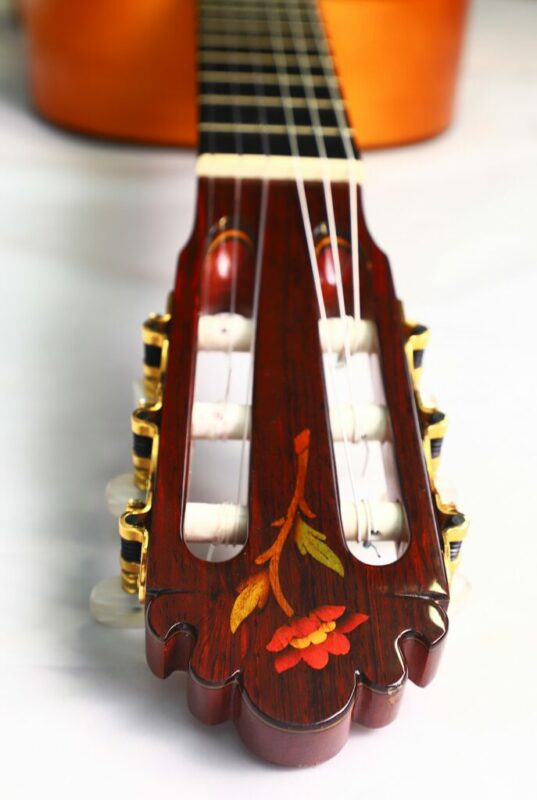 The classical guitar, also known as a concert guitar or nylon string guitar, is a traditional string instrument characterized by its specific construction and warm, mellow sound. The modern classical guitar originated in Spain, which is why it is often referred to as a Spanish guitar. It consists of a finely crafted top, a stable neck, a hollow body, a nut, a fretboard, and a headstock with open tuners.
The classical guitar, also known as a concert guitar or nylon string guitar, is a traditional string instrument characterized by its specific construction and warm, mellow sound. The modern classical guitar originated in Spain, which is why it is often referred to as a Spanish guitar. It consists of a finely crafted top, a stable neck, a hollow body, a nut, a fretboard, and a headstock with open tuners.
Typical of the classical guitar are nylon strings, which produce a softer sound compared to the steel strings of an acoustic guitar and are easier on the fingers while playing. The scale length is usually 650 mm, and the nut width is about 52 mm – creating a generous string layout that allows for precise fingerstyle playing. Another feature is that classical guitars usually do not have pickups and are played acoustically. Compared to acoustic guitars, the classical guitar sounds milder and more balanced, making it the ideal choice for classical music, Flamenco, or Latin styles.
Concert Guitar or Acoustic Guitar – What’s the Difference?
The concert guitar is often referred to as an acoustic guitar – while this is true, not every acoustic guitar is a concert guitar. The term "acoustic" generally refers to all guitars that are played without electric amplification. This includes both concert and western guitars. However, in common usage, "acoustic guitar" typically refers to the western guitar with steel strings.
The concert guitar, with its nylon strings, wider nut width, and softer sound, is specifically suited for classical music and fingerstyle. It is also particularly popular among beginners, as it is easier to play and places less strain on the fingers. Additionally, it impresses with its balanced, warm tone.
For more about other acoustic models, please visit: Acoustic Guitar.
Choosing the Right Classical Guitar – What Matters
When purchasing a classical guitar, scale length and size play a central role. For children or individuals with smaller hands, a shorter scale or smaller body size (e.g., 3/4 guitar) is recommended. Adults usually opt for the standard size with a 650 mm scale length.
The sound profile is heavily influenced by the choice of wood: A cedar top sounds warm and direct, while spruce tends to be bright and brilliant. The body made of rosewood, maple, or cypress also affects the tone color and volume.
The feel of the fret hand is also crucial – a comfortable action, well-shaped neck, and appropriate nut width (usually 52–54 mm) make playing more enjoyable.
Whether beginner, intermediate, or professional: the right classical guitar must not only sound good but also fit the guitarist's playing technique and hand size. Good advice can help with the selection.
Craftsmanship & Luthiers – What Shapes the Sound?

The luthier has a decisive influence on the sound of a classical guitar. With years of experience, a keen ear, and craftsmanship, they significantly determine how the instrument sounds, resonates, and feels.
The workmanship must be precise: every glue joint, curve, and joint affects resonance. The choice of wood is particularly important – spruce, cedar, rosewood, or maple have different tonal properties and impact the response, volume, and tone color.
All of this directly influences the vibrational properties of the top and body – and thus the overall sound profile. Therefore, the more carefully the instrument is built, the more balanced, rich, and refined its tone will be.
Accessories & Tips for Beginners
| Accessory | Description |
|---|---|
| Guitar Bag or Case | Protects the guitar during transport. A padded bag is ideal for everyday use. |
| Strings | Replacement strings in the correct gauge, preferably nylon strings for beginners, which are gentler to play. Carbon strings produce a louder and brighter tone. |
| Tuner | Electronic tuner or tuning app to accurately tune the guitar. |
| Picks | Useful for certain playing styles; try different thicknesses to find the right one. |
| Music Stand | Facilitates playing with sheet music or tablature and ensures a comfortable posture. |
Tips for Getting Started
| Tip | Description |
|---|---|
| Regular Practice | Set fixed practice times; short, regular sessions are more effective than long ones once a week. |
| Correct Posture | Maintain a comfortable and ergonomic posture to prevent back problems. |
| Slow Progress | Start with simple chords and melodies; take your time to master fundamental techniques. |
| Learn the Theory | A basic understanding of music theory, such as note values and chord construction, is helpful. |
| Play with Others | Look for like-minded individuals or a music group; this fosters motivation and progress. |



